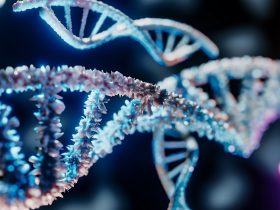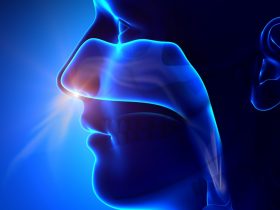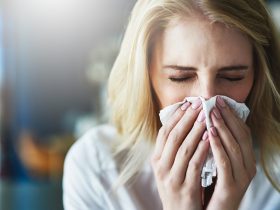At the recent American Rhinologic Society, Combined Otolaryngology Spring Meeting (ARS-COSM) in Boston, Massachusetts (May 4-5, 2023), researchers from the University of California, San Francisco, presented a study aiming to understand better how epithelial shifts lead to the inflammation states observed in Chronic rhinosinusitis (CRS) and asthma patients. The results showed that high prostaglandin-E2 (PGE2) and activated tuft cell scores contribute to the CRS disease burden and increase revision surgery.
Prior studies have reported that patients with high type-2 inflammation have a high level of comorbid asthma, tend to require more aggressive medical management, and have a higher risk of requiring revision surgery.
Over the past few years, an increasing interest has been observed in harnessing type-2 immunity through human sensory immune surveillance. A tuft cell, a solitary chemosensory cell, can detect changes in the mucosal microenvironment, releasing pro-inflammatory cytokines and prostaglandins that can activate innate lymphoid cells (ILC-2). These cells release the hallmark type two inflammatory cytokines, activating type-2 immunity leading to chronic rhinosinusitis with nasal polyposis (CRSwNP) and asthma.
To understand how tuft cells are activated, the researchers used transcriptional analysis and took sino-nasal brushing from 24 CRSwNP patients, 8 control individuals, and 7 CRSsNP patients. Then, single-cell RNA sequencing was performed on 5 CRSwNP patients and 12 CRSsNP patients, and control patients. Finally, differential gene expression analysis was employed to characterize all the genes unique to each cell type to obtain gene expression scores. These single-cell RNA genes were then correlated with the clinical endpoints of the disease.
Study results revealed that CRSwNP patients had lower affiliated cell gene scores. Moreover, they lose ciliated cells; however, an increase in genes for the tuft cells and mast cell score was observed for this population group. In addition, no differences were observed in basal cells, neuroendocrine cells, and ionocytes.
Notably, IL-13 gene activation correlated with higher tuft, goblet, and mast cell gene scores. Besides, 116 genes, including BMX, GNG13, TRPM5, and DCLK1, were differentially expressed between CRSwNP and healthy controls, while 7 genes, including PTGS1, ALOXS were differentially expressed in activated tuft cells from nasal polyps. It was also observed that the activated tuft cell score and PGE2 scores correlated with CRS disease burden, and the PGE2 scores also correlated with increased revision FESS.
The study’s authors include Neil N. Patel, MD MSc; Maya Kotas, MD Ph.D.; Emily Cope, Ph.D.; Patricia Loftus, MD; Jose Gurrola II MD; Steven D. Pletcher MD; Andrew N. Goldberg MD; Max Seibold, Ph.D.; Camille Moore, Ph.D.; and Erin Gordon, MD.
Reference:
Patel N, Kotas M, Cope E, et al. IL-13 associated epithelial remodeling correlates with increased tuft cells, prostaglandin E2 activation, and clinical severity in NP. ARS-COSM. May 4-5, 2023.







